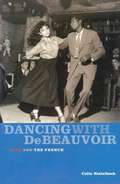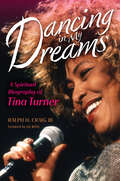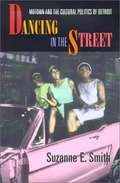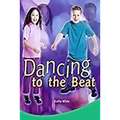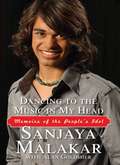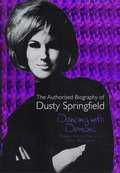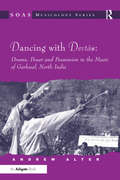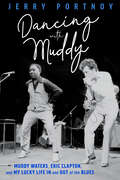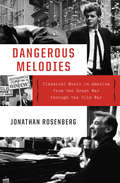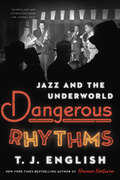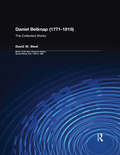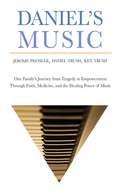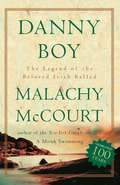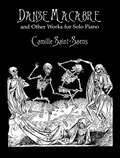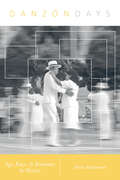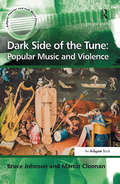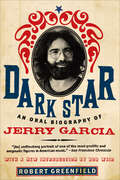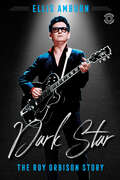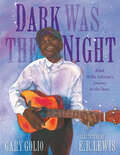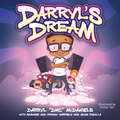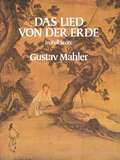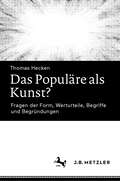- Table View
- List View
Dancing Revolution: Bodies, Space, and Sound in American Cultural History (Music in American Life)
by Christopher J. SmithThroughout American history, patterns of political intent and impact have linked the wide range of dance movements performed in public places. Groups diverse in their cultural or political identities, or in both, long ago seized on dancing in our streets, marches, open-air revival meetings, and theaters, as well as in dance halls and nightclubs, as a tool for contesting, constructing, or reinventing the social order. Dancing Revolution presents richly diverse cases studies to illuminate these patterns of movement and influence in movement and sound in the history of American public life. Christopher J. Smith spans centuries, geographies, and cultural identities as he delves into a wide range of historical moments. These include: the God-intoxicated public demonstrations of Shakers and Ghost Dancers in the First and Second Great Awakenings; creolized antebellum dance in cities from New Orleans to Bristol; the modernism and racial integration that imbued twentieth-century African American popular dance; and public movement's contributions to hip hop, anti-hegemonic protest, and other contemporary transgressive communities’ physical expressions of dissent and solidarity. Multidisciplinary and wide-ranging, Dancing Revolution examines how Americans turned the rhythms of history into the movement behind the movements.
Dancing With De Beauvoir: Jazz and the French
by Colin NettelbeckWhen live jazz arrived in France towards the end of World War I, it was seen from the start as a fertile symbol of other things. It was an embodiment of artistic freedom, it was modernism, it was America, it was African primitivism, sexual liberation, social decadence and moral decay. Its energy and innovation helped produce an unprecedented explosion of activity in modern French art and thought. Paris and jazz had a special relationship. From the United States flowed a stream of black jazz artists keen to taste the freedom and sophistication of the City of Light: Josephine Baker, Sidney Bechet, Count Basie, Duke Ellington, Louis Armstrong and Miles Davis. In their audiences were other significant Americans who called Paris home—Ernest Hemingway, Cole Porter, Sylvia Beach, and Man Ray. Django Reinhardt, Jean Cocteau, Louis-Ferdinand Céline, Boris Vian, Simone de Beauvoir, Jean-Luc Godard, Louis Malle and Jacques Derrida were among the French artists and intellectuals who also responded, transforming their culture into jazz's second home. In Dancing with De Beauvoir, Colin Nettelbeck explores the powerful synergies between jazz and the French. This authoritative cultural history not only recalls influential performances and recordings. It teases out the threads of artistic collaborations and rivalries, revisits influential meetings, love affairs and friendships, and explores tensions in US-French relations, to show how jazz has helped shaped modern French culture. Stylishly illustrated with rare black-and-white photographs, this is a book for anyone who has ever fallen in love with France, and wondered why.
Dancing in My Dreams: A Spiritual Biography of Tina Turner (Library of Religious Biography (LRB))
by Ralph H. CraigIf you don&’t know Tina Turner&’s spirituality, you don&’t know Tina. When Tina Turner reclaimed her throne as the Queen of Rock &‘n&’ Roll in the 1980s, she attributed her comeback to one thing: the wisdom and power she found in Buddhism. Her spiritual transformation is often overshadowed by the rags-to-riches arc of her life story. But in this groundbreaking biography, Ralph H. Craig III traces Tina&’s journey from the Black Baptist church to Buddhism and situates her at the vanguard of large-scale movements in religion and pop culture. Paying special attention to the diverse metaphysical beliefs that shaped her spiritual life, Craig untangles Tina&’s Soka Gakkai Buddhist foundation; her incorporation of New Age ideas popularized in &’60s counterculture; and her upbringing in a Black Baptist congregation, alongside the influences of her grandmothers&’ disciplinary and mystical sensibilities. Through critical engagement with Tina&’s personal life and public brand, Craig sheds light on how popular culture has been used as a vehicle for authentic religious teaching. Scholars and fans alike will find Dancing in My Dreams as enlightening as the iconic singer herself.
Dancing in the Street: Motown and the Cultural Politics of Detroit
by Suzanne E. SmithDetroit in the 1960s was a city with a pulse: people were marching in step with Martin Luther King, Jr., dancing in the street with Martha and the Vandellas, and facing off with city police. Through it all, Motown provided the beat. This book tells the story of Motown--as both musical style and entrepreneurial phenomenon--and of its intrinsic relationship to the politics and culture of Motor Town, USA. <p><p>As Suzanne Smith traces the evolution of Motown from a small record company firmly rooted in Detroit's black community to an international music industry giant, she gives us a clear look at cultural politics at the grassroots level. Here we see Motown's music not as the mere soundtrack for its historical moment but as an active agent in the politics of the time. In this story, Motown Records had a distinct role to play in the city's black community as that community articulated and promoted its own social, cultural, and political agendas. Smith shows how these local agendas, which reflected the unique concerns of African Americans living in the urban North, both responded to and reconfigured the national civil rights campaign. <p><p>Against a background of events on the national scene--featuring Martin Luther King, Jr., Langston Hughes, Nat King Cole, and Malcolm X--Dancing in the Street presents a vivid picture of the civil rights movement in Detroit, with Motown at its heart. This is a lively and vital history. It's peopled with a host of major and minor figures in black politics, culture, and the arts, and full of the passions of a momentous era. It offers a critical new perspective on the role of popular culture in the process of political change.
Dancing to the Beat (Rigby PM Plus Blue (Levels 9-11), Fountas & Pinnell Select Collections Grade 3 Level Q)
by Kathy WhiteDancing to the beat By Kathy White
Dancing to the Music in My Head: Memoirs of the People's Idol
by Sanjaya Malakar Alan GoldsherSanjaya Malakar, the most popular contestant on Season Six of American Idol, gives readers a behind-the-scenes look at his meteoric rise to fame on one of the most-watched shows on television.Despite finishing in seventh position, Sanjaya Malakar was the most talked about contestant on the sixth season of the television phenomenon American Idol. Best known for his flamboyant hairstyles and screaming young fans, Sanjaya quickly became a household name. His unique style, soft-spoken demeanor, and ingenious song selections made him a fixture on numerous entertainment programs and magazines and led to a huge and devoted fanbase that still remains today.Here, in Dancing to the Music in My Head, he takes fans behind the scenes and reveals what it's like to star on one of television's most popular shows, and how the experience forever changed his life. In his own words, he shares how he soared from obscurity to worldwide fame, from waiting on line amongst thousands of hopefuls to touring with the Top Ten finalists all across the country and being named one of Time magazine's Most Influential People of the Year in 2007. From attending a dinner at the White House to being the subject of parody on Saturday Night Live, Sanjaya has captured national attention in a way that far exceeds that of most ordinary suburban teenagers.
Dancing with Demons
by Penny Valentine Vicki WickhamDusty Springfield made her name in the 60s with a string of top ten hits. Her unique singing style and distinctive bouffant blonde look made her famous throughout the world. Despite a period in the wilderness during the 70s and 80s, she was back at the top in the 90s until her death from cancer in March l999.Born an Irish Catholic in l939, her background set her almost schizophrenically at odds with herself as she realised her sexuality and moved further into the rock world. Both Penny Valentine and Vicki Wickham knew Dusty well, as friend and manager for much of her career. As well as charting her gay relationships, this book also looks candidly at the period of her greatest self-destruction while living in Los Angeles in the 80s. Covering every area of her career with honesty and affection, Dusty is brought vividly to life.
Dancing with Demons
by Penny Valentine Vicki WickhamDusty Springfield made her name in the 60s with a string of top ten hits. Her unique singing style and distinctive bouffant blonde look made her famous throughout the world. Despite a period in the wilderness during the 70s and 80s, she was back at the top in the 90s until her death from cancer in March l999.Born an Irish Catholic in l939, her background set her almost schizophrenically at odds with herself as she realised her sexuality and moved further into the rock world. Both Penny Valentine and Vicki Wickham knew Dusty well, as friend and manager for much of her career. As well as charting her gay relationships, this book also looks candidly at the period of her greatest self-destruction while living in Los Angeles in the 80s. Covering every area of her career with honesty and affection, Dusty is brought vividly to life.
Dancing with Devtas: Drums, Power and Possession in the Music of Garhwal, North India (SOAS Studies in Music)
by Andrew AlterIn the Central Himalayan region of Garhwal, the gods (devtas) enjoy dancing. Musicians - whether ritual specialists or musical specialists - are therefore an indispensable part of most entertainment and religious events. In shamanistic ceremonies, their incantations, songs and drumming 'make' the gods possess their mediums. In other contexts, such as dramatic theatrical renditions of stories of specific deities, actors 'dance' the role of their character having become possessed by the spirit of their character. Through the powerful sounds of their drumming, musicians cause the gods to dance. Music, and more particularly musical sound, is perceived in Garhwal as a powerful force. Andrew Alter examines music and musical practice in Garhwal from an analytical perspective that explores the nexus between musical sounds and performance events. He provides insight into performance practice, vocal techniques, notions of repertoire classification, instruments, ensembles, performance venues, and dance practice. However, music is not viewed simply as a system of organized sounds such as drum strokes, pitch iterations or repertoire items. Rather, in Garhwal, the music is viewed as a system of knowledge and as a system of beliefs in which meaning and spirituality become articulated through potent sound iterations. Alter makes a significant contribution to the discipline of ethnomusicology through a detailed documentation of musical practice in the context of ritual events. The book offers a traditionally thorough historical-ethnographic study of a region with the aim of integrating the local field-based case studies of musical practices within the broader Garhwali context. The work contains invaluable oral data, which has been carefully transliterated as well as translated. Alter blends a carefully detailed analysis of drumming in conjunction with the complex ritual and social contexts of this sophisticated and semantically rich musical practice.
Dancing with Muddy: Muddy Waters, Eric Clapton, and My Lucky Life In and Out of the Blues
by Jerry PortnoyJerry Portnoy grew up in Chicago hearing the blues being played outside his father's rug store on famed Maxwell Street during the late 1940s and early '50s. After dropping out of college, he became immersed in the colorful world of pool hustlers like Cornbread Red, and Minnesota Fats as he managed the largest pool hall in Chicago. During a stint as a paratrooper early in the Vietnam war, he applied for discharge as a conscientious objector, and lived in San Francisco during 1967's "summer of love." While bumming around Europe the following year, Portnoy heard the blues again on a record by Sonny Boy Williamson and instantly became obsessed with mastering blues harmonica. He returned to Chicago and in 1974 he was playing in small Black clubs at night when Muddy Waters plucked him from his day job at Cook County Jail to fill the historic harmonica chair in his fabled band. Eric Clapton followed suit in 1991. In a career that took him from ghetto taverns to the White House and the Royal Albert Hall, he went from the raggedy vans and cheap roadside motels of the blues world to the private jets and five-star hotels of the rock world. Between those two very different gigs was a struggle to survive the vagaries of the music business and the pressures of life on the road. In a remarkable life, he also assisted in surgery, lodged in a Moroccan house of ill repute, and dined at Giorgio Armani's. Dancing with Muddy details the surprising, lively, and sometimes bumpy ride of a blues harmonica legend.
Dangerous Melodies: Classical Music In America From The Great War Through The Cold War
by Jonathan RosenbergA Juilliard-trained musician and professor of history explores the fascinating entanglement of classical music with American foreign relations. Dangerous Melodies vividly evokes a time when classical music stood at the center of twentieth-century American life, occupying a prominent place in the nation’s culture and politics. The work of renowned conductors, instrumentalists, and singers—and the activities of orchestras and opera companies—were intertwined with momentous international events, especially the two world wars and the long Cold War. Jonathan Rosenberg exposes the politics behind classical music, showing how German musicians were dismissed or imprisoned during World War I, while numerous German compositions were swept from American auditoriums. He writes of the accompanying impassioned protests, some of which verged on riots, by soldiers and ordinary citizens. Yet, during World War II, those same compositions were no longer part of the political discussion, while Russian music, especially Shostakovich’s, was used as a tool to strengthen the US-Soviet alliance. During the Cold War, accusations of communism were leveled against members of the American music community, while the State Department sent symphony orchestras to play around the world, even performing behind the Iron Curtain. Rich with a stunning array of composers and musicians, including Karl Muck, Arturo Toscanini, Wilhelm Furtwängler, Kirsten Flagstad, Aaron Copland, Van Cliburn, and Leonard Bernstein, Dangerous Melodies delves into the volatile intersection of classical music and world politics to reveal a tumultuous history of twentieth-century America.
Dangerous Rhythms: Jazz and the Underworld
by T. J. EnglishFrom T. J. English, the New York Times bestselling author of Havana Nocturne, comes the epic, scintillating narrative of the interconnected worlds of jazz and organized crime in 20th century America."[A] brilliant and courageous book." —Dr. Cornel WestDangerous Rhythms tells the symbiotic story of jazz and the underworld: a relationship fostered in some of 20th century America’s most notorious vice districts. For the first half of the century mobsters and musicians enjoyed a mutually beneficial partnership. By offering artists like Louis Armstrong, Earl “Fatha” Hines, Fats Waller, Duke Ellington, Billie Holiday, Lena Horne, and Ella Fitzgerald a stage, the mob, including major players Al Capone, Meyer Lansky, and Charlie “Lucky” Luciano, provided opportunities that would not otherwise have existed.Even so, at the heart of this relationship was a festering racial inequity. The musicians were mostly African American, and the clubs and means of production were owned by white men. It was a glorified plantation system that, over time, would find itself out of tune with an emerging Civil Rights movement. Some artists, including Louis Armstrong, believed they were safer and more likely to be paid fairly if they worked in “protected” joints. Others believed that playing in venues outside mob rule would make it easier to have control over their careers.Through English’s voluminous research and keen narrative skills, Dangerous Rhythms reveals this deeply fascinating slice of American history in all its sordid glory.
Daniel Belknap: The Collected Works (Music of the New American Nation: Sacred Music from 1780 to 1820)
by David Warren SteelDaniel Belknap was a farmer, mechanic, and singing-master in Framingham, Massachusetts, who compiled four sacred and one secular tunebooks. These featured his own sacred compositions as well as those by other New England composers. While Belknap was not as flamboyant, prolific, nor as innovative as his contemporaries, he nevertheless provided fitting and eloquent religious and social music for his own and neighboring communities.
Daniel's Music: One Family's Journey from Tragedy to Empowerment Through Faith, Medicine, and the Healing Power of Music
by Jerome Preisler The Trush FamilyIn 1997, Daniel Trush, a bright, active, outgoing twelve-year-old, collapsed on the basketball court and fell into a deep coma. Rushed to the hospital, he was found to have five previously undetected aneurysms in his brain. One had burst, causing a massive cerebral hemorrhage.While Daniel remained comatose, the uncontrolled pressure inside his skull caused him to suffer multiple strokes. Tests showed that his brain functions had flat-lined, and doctors would soon tell his parents his chances of survival were slim to none--or that he'd likely remain in a vegetative state if he awakened.But the doctors were wrong.Daniel's traumatic injury did not bring his life to a premature end. Thirty days after lapsing into a coma, he would return to consciousness, barely able to blink or smile. Two years later, he took his first extraordinary steps out of a wheelchair. A decade after being sped to the emergency room, Daniel Trush completed the New York Marathon.But his incredible journey into the future had just begun. With music having played a crucial role in his recovery, Danny and his family launched Daniel's Music Foundation, a groundbreaking nonprofit organization for people with disabilities. In time DMF would be honored on a Broadway stage by the New York Yankees, gaining notoriety and admiration across America.Daniel's Music is the gripping story of Daniel's recovery against odds experts said were insurmountable; of medical science, faith, and perseverance combining for a miracle; and of an average family turning their personal trials into a force that brings joy, inspiration, and a powerful sense of belonging to all those whose lives they touch.
Danny Boy: The Legend Of The Beloved Irish Ballad
by Malachy MccourtEveryone can hum this haunting Irish ballad that inevitably brings a tear to the eye. The most requested Irish song, it has been recorded by a variety of performers ranging from Elvis Presley, Bing Crosby, and Kate Smith to the Pogues. The complete story of this moving tune has been shrouded in mystery until now. Where did Danny Boy originate, who actually wrote the lyrics, and is it even Irish? Acclaimed novelist, actor, memoirist, screenwriter, playwright, and raconteur, Malachy McCourt, turns his Irish eye to the song's complex history and myths in an eloquent ode to this classic. He traces the evolution of the music, which is one of more than 100 songs composed to the very same tune, including the familiar Londonderry Air, and explores the enduring mystique of Danny Boy in an unforgettable tribute that brilliantly weaves history with folklore.
Danse Macabre and Other Works for Solo Piano (Dover Classical Piano Music)
by Camille Saint-SaënsSplendid compilation features a variety of the composer's best piano works, all reproduced from authoritative sources. Taking its title from the popular orchestral work "Danse Macabre" (presented here in the brilliant arrangement by Liszt), this collection also includes "Allegro appassionato," "Album" (consisting of 6 pieces), "Rhapsodie d'Auvergne," "Theme and Variations," plus 6 etudes, 3 waltzes, and 6 etudes for left hand alone. Introduction.
Danzón Days: Age, Race, and Romance in Mexico (Music in American Life)
by Hettie MalcomsonOlder people negotiating dance routines, intimacy, and racialized differences provide a focal point for an ethnography of danzón in Veracruz, the Mexican city closely associated with the music-dance genre. Hettie Malcomson draws upon on-site research with semi-professional musicians and amateur dancers to reveal how danzón connects, and does not connect, to blackness, joyousness, nostalgia, ageing, and romance. Challenging pervasive utopian views of danzón, Malcomson uses the idea of ambivalence to explore the frictions and opportunities created by seemingly contrary sentiments, ideas, sensations, and impulses. Interspersed with experimental ethnographic vignettes, her account takes readers into black and mestizo elements of local identity in Veracruz, nostalgic and newer styles of music and dance, and the friendships, romances, and rivalries at the heart of regular danzón performance and its complex social world. Fine-grained and evocative, Danzón Days journeys to one of the genre’s essential cities to provide new perspectives on aging and romance and new explorations of nostalgia and ambivalence.
Dark Side of the Tune: Popular Music And Violence (Ashgate Popular And Folk Music Ser.)
by Martin CloonanWritten against the academically dominant but simplistic romanticization of popular music as a positive force, this book focuses on the 'dark side' of the subject. It is a pioneering examination of the ways in which popular music has been deployed in association with violence, ranging from what appears to be an incidental relationship, to one in which music is explicitly applied as an instrument of violence. A preliminary overview of the physiological and cognitive foundations of sounding/hearing which are distinctive within the sensorium, discloses in particular their potential for organic and psychic violence. The study then elaborates working definitions of key terms (including the vexed idea of the 'popular') for the purposes of this investigation, and provides a historical survey of examples of the nexus between music and violence, from (pre)Biblical times to the late nineteenth century. The second half of the book concentrates on the modern era, marked in this case by the emergence of technologies by which music can be electronically augmented, generated, and disseminated, beginning with the advent of sound recording from the 1870s, and proceeding to audio-internet and other contemporary audio-technologies. Johnson and Cloonan argue that these technologies have transformed the potential of music to mediate cultural confrontations from the local to the global, particularly through violence. The authors present a taxonomy of case histories in the connection between popular music and violence, through increasingly intense forms of that relationship, culminating in the topical examples of music and torture, including those in Bosnia, Darfur, and by US forces in Iraq and Guant mo Bay. This, however, is not simply a succession of data, but an argumentative synthesis. Thus, the final section debates the implications of this nexus both for popular music studies itself, and also in cultural policy and regulation, the ethics of citizenship, and arguments about human
Dark Star: An Oral Biography of Jerry Garcia
by Robert GreenfieldFor more than thirty years, Jerry Garcia was the musical and spiritual center of the Grateful Dead, one of the most popular rock bands of all time. In Dark Star, the first biography of Garcia published after his death, Garcia is remembered by those who knew him best. Together the voices in this oral biography explore his remarkable life: his childhood in San Francisco; the formation of his musical identity; the Dead's road to rock stardom; and his final, crushing addiction to heroin. Interviews with Jerry's former wives, lovers, family members, close friends, musical partners, and cultural cohorts create a behind-the-scenes look at the making of a rock-and-roll icon—and at the price of fame.
Dark Star: The Roy Orbison Story
by Ellis AmburnThis biography reveals the rock music legend’s dramatic life story, from his Texas youth and rise to stardom to his personal tragedies and untimely death.A true legend of American popular music, Roy Orbison perfected the soulful rock ballad, recording such perennial hits as “Only the Lonely” and “Crying.” In Dark Star, biographer Ellis Amburn reveals the stories behind his achingly beautiful sound. Amburn explores Orbison’s rockabilly roots, his first deal with Sun Records, and his numerous Billboard Top 40 hits. Amburn then delves into the personal tragedies, including the sudden deaths of his wife and two of his children, that led to his obscurity. His return to stardom is also covered in detail, including his work with the supergroup The Traveling Wilburys and his posthumous hit single “You got It.”
Dark Was the Night: Blind Willie Johnson's Journey to the Stars
by Gary GolioThe poignant story of Blind Willie Johnson--the legendary Texas musician whose song "Dark Was the Night" was included on the Voyager I space probe's Golden RecordWillie Johnson was born in 1897, and from the beginning he loved to sing--and play his cigar box guitar. But his childhood was interrupted when he lost his mother and his sight. How does a blind boy make his way in the world? Fortunately for Willie, the music saved him and brought him back into the light. His powerful voice, combined with the wailing of his slide guitar, moved people. Willie made a name for himself performing on street corners all over Texas. And one day he hit it big when he got a record deal and his songs were played on the radio. Then in 1977, his song--"Dark Was the Night"--was chosen to light up the darkness when it was launched into space on the Voyager I space probe's famous Golden Record. His immortal song was selected for the way it expresses the loneliness humans all feel, while reminding us we're not alone.
Darker Than the Deepest Sea: The Search for Nick Drake
by Trevor DannWhen Nick Drake (1948-1974) died of a drug overdose at twenty-six, he left behind three modest-selling albums, including the stark Pink Moon and the lush Bryter Layter. Three decades later, he is recognized as one of the true geniuses of English acoustic music. Yet Nick Drake--whose music was as gentle and melancholy as the man himself-- has always maintained a spectral presence in popular music. This groundbreaking biography reconstructs a vanished life while perfectly capturing the bohemian scenes surrounding the music business in London in the late '60s and early '70s. Using many newly discovered documents and all-new interviews, Trevor Dann reveals more detail on Nick Drake than ever, from his upbringing in a quintessentially English village, through his hash-fueled school days at Cambridge University, to the missed opportunities and mismanagement that defined his career. Friends and colleagues describe the difficulties that he faced as each new album was released, only to fail, and the insidious despair that consumed him. Complete with discography and rare photos, Darker Than the Deepest Sea is essential reading for anyone who has been moved by Nick Drake's unforgettable blend of beauty and sadness.
Darryl's Dream
by Darryl "DMC" McDaniels Shawnee Warfield Johnny Warfield Adam PadillaFrom hip-hop pioneer Darryl &“DMC&” McDaniels comes Darryl&’s Dream, a new picture book about creativity, confidence, and finding your voice.Meet Darryl, a quiet third grader with big hopes and dreams. He loves writing and wants to share his talents, but he&’s shy—and the kids who make fun of his glasses only make things worse. Will the school talent show be his chance to shine? Darryl&’s Dream, by iconic performer Darryl "DMC" McDaniels, is a story about finding confidence, facing bullies, and celebrating yourself. This full-color picture book is certain to entertain children and parents with its charming art and important message.
Das Lied von der Erde in Full Score (Dover Music Scores)
by Gustav MahlerIn Das Lied von der Erde, Gustav Mahler fused the two forms that most obsessed him -- song and symphony -- into a masterpiece that epitomized his musical genius and the very spirit of late Romanticism. It is a work of stunning power, one that musical artists and audiences worldwide have made a repertoire favorite, and it is reprinted here from the original full score published in Vienna by Universal-Edition in 1912.Based on a cycle of six poems translated from the Chinese by Hans Bethge, Das Lied von der Erde, scored for tenor, alto (or baritone), and orchestra, expresses a dualism of feeling -- ecstatic pleasure shadowed by dark foreboding -- that characterizes not only Mahler himself but the peculiarly autumnal mood of late Romanticism as well. Throughout, Mahler calls on the orchestra to suggest the exotic atmosphere summoned by the text, and to sustain and supplement the solos with all its resources, both in the accompaniment and the extensive connecting interludes.This sturdily bound, finely produced full score, containing an English translation of the song text is printed on fine-quality paper. It offers both amateur and professional singers and musicians -- along with music lovers who enjoy following a love or recorded performance, score in hand -- a lifetime of pleasurable study and intimate enjoyment of one of the most celebrated classics of 20th-century music.
Das Populäre als Kunst?: Fragen der Form, Werturteile, Begriffe und Begründungen
by Thomas HeckenPopulären Werken wird seit Jahrhunderten der Status des Kunstwerks aberkannt, unter Verweis auf deren vermeintliche Oberflächlichkeit, Eindimensionalität, Effekthascherei und Standardisierung werden sie streng von ‚echter‘ Kunst geschieden. Schiller, Nietzsche, Adorno, Greenberg, unzählige Kritiker und Feuilletonisten in Westeuropa und den USA – sie alle eint ein starker Vorbehalt gegenüber dem, was von den Vielen anerkannt, geschätzt und gekauft wird. Seit Beginn des 18. Jahrhunderts und besonders seit den 1950er Jahren gibt es aber auch eine Reihe von Argumenten gegen die Auffassung, dass nichts Kunst sei, was auf große Zustimmung trifft. Die Fülle an unterschiedlichen Positionen, Aussagen und Argumentationsmöglichkeiten aufzuzeigen, zu bündeln, zu systematisieren und zu überprüfen, die dem Populären zu künstlerischer Anerkennung verhelfen wollen, ist Zweck dieses Buches. Das Resultat ist eine umfassende Darstellung von Gründen, auch populäre Werke aus Literatur, Musik, Film, Fotografie, bildender Kunst und Design als genuine Kunstwerke betrachten zu können.

